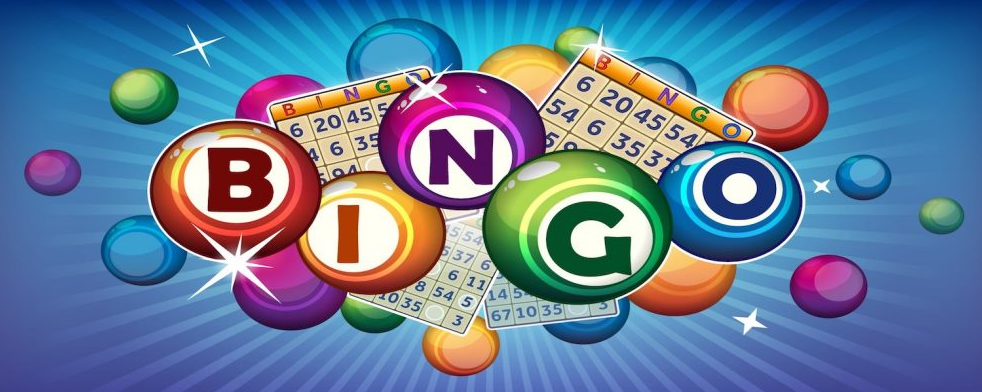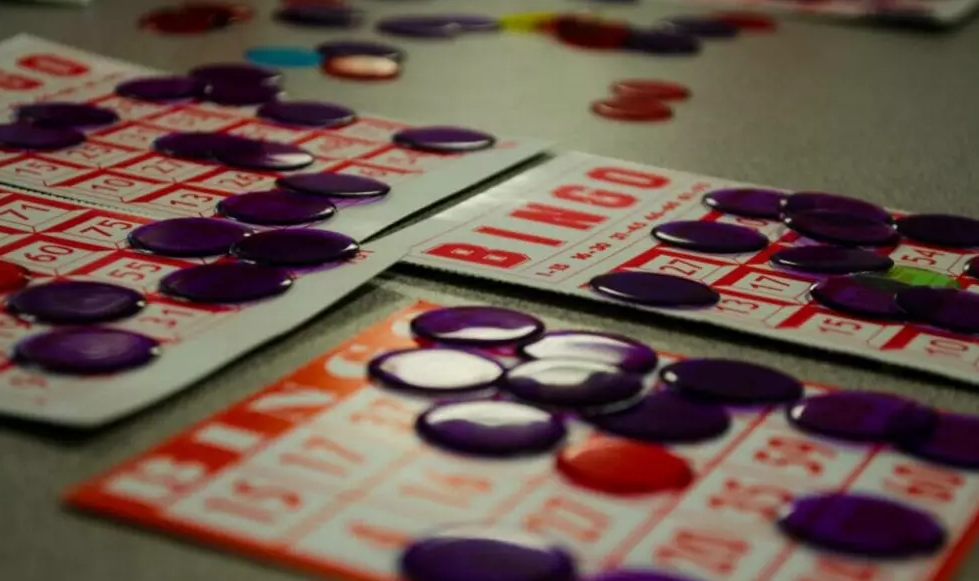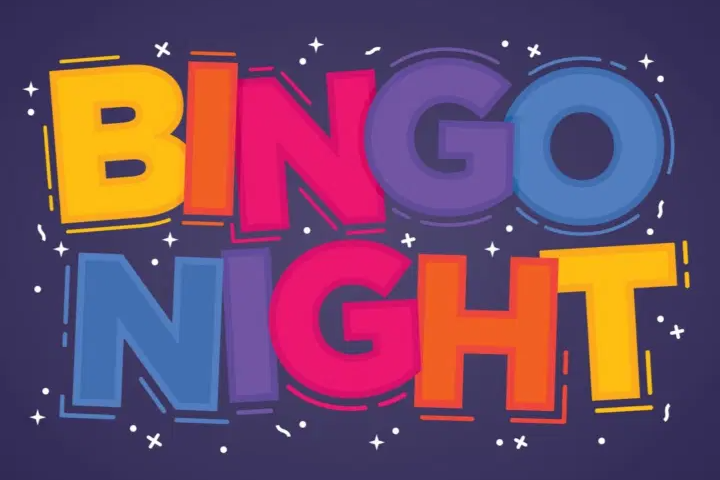To run a successful bingo night, select a suitable venue, prepare essential materials, establish rules, engage the audience with entertainment, and ensure safety.
Preparation Steps
Choosing the Right Venue
When planning a bingo night, the venue plays a pivotal role in setting the atmosphere and accommodating your players. Selecting a space that is both spacious and comfortable can enhance the experience. Here are some things to consider:
- Location: Opt for a central location, accessible by public transport, which can attract more participants.
- Size: Depending on your estimated number of players, the venue should be spacious enough to accommodate tables, chairs, and walking space. A hall that can accommodate around 100 people would typically be around 2,000 square feet.
- Facilities: Ensure the venue has restrooms, a stage area for the bingo caller, and possibly a snack bar or refreshment area.
- Cost: Rental costs can vary widely based on location and facilities. In urban areas, a hall rental might range from $500 to $2000 for a night.
Determining the Number of Players
Estimating the number of players can help in many aspects, from choosing the venue size to ordering the right number of bingo cards.
- RSVP System: Use online platforms like Eventbrite or social media events to get a rough estimate of attendees.
- Safety Regulations: Ensure you’re not exceeding the venue’s maximum occupancy, keeping safety in mind.
- Optimal Number: For a community bingo night, anywhere from 50 to 150 players can be considered ideal. It’s large enough to create excitement but manageable in terms of logistics.

Gathering Essential Materials: Bingo Cards, Markers, and Prizes
Every bingo game needs the basics to run smoothly.
- Bingo Cards: These can be purchased in bulk, with prices ranging from $10 for a set of 50 to $50 for 500 cards, depending on quality and design.
- Markers: Players can use anything from coins to specially designed bingo markers. A set of markers might cost around $5 to $10.
- Prizes: Allocate a budget for prizes. For example, setting aside $200 can allow you to purchase ten $20 prizes or five $40 prizes. Remember, prizes don’t always have to be expensive; they just need to be desirable.
Setting Up a Sound System
Sound is crucial to ensure everyone hears the numbers being called.
- Microphone and Speaker: A basic setup might cost around $100 to $300. It’s essential the caller’s voice carries across the entire venue without distortion.
- Backup System: Always have a backup in case of technical difficulties. This could be a spare microphone or even a megaphone.
- Acoustics: Check the venue’s acoustics. High ceilings or large open spaces might require more powerful sound systems.
The preparation phase is essential for the smooth running of the bingo night. Proper organization and attention to detail can ensure participants have a memorable experience.
Designing the Bingo Cards
Traditional vs. Customized Bingo Cards
Traditional Bingo Cards:
- Definition: Traditional bingo cards contain a grid of numbers, typically in a 5×5 format, which correspond to letters B-I-N-G-O.
- Popularity: Many players prefer these cards due to their familiarity and straightforward gameplay.
- Cost: Traditional cards often come cheaper, with prices ranging from $5 to $15 for a pack of 100 cards.
Customized Bingo Cards:
- Creativity: Custom cards allow organizers to tailor themes, perhaps aligning with holidays, local events, or specific causes.
- Engagement: Custom themes can increase player engagement, especially if the themes resonate with participants.
- Pricing: Customized cards, due to their unique design and printing requirements, can cost slightly higher, with prices ranging from $15 to $30 for a pack of 100.
Using Software or Online Platforms
Benefits:
- Flexibility: Software allows you to design and print as many cards as you need, which is particularly useful for large events or repeat occasions.
- Templates: Many platforms offer templates that make the design process simpler and more efficient.
- Cost-Effective: While there’s an initial cost for the software (often between $20 to $100), in the long run, it can be more cost-effective than constantly buying pre-made cards.

Popular Platforms:
- Print-Bingo: An online tool which provides both traditional and custom templates.
- Bingo Baker: This platform lets you create custom bingo cards and also has a feature to play bingo online, useful for virtual events.
Rules and Regulations
Establishing the Basic Rules
- Bingo Card Structure: Ensure every player understands the grid structure and what each column represents.
- Winning Patterns: Clearly define how to win—be it a full house, a line, four corners, or special patterns.
- Calling Speed: Set a consistent pace for calling numbers, ensuring it neither drags nor rushes, keeping the game flowing smoothly.
Deciding on Game Variations
Different game variations can spice up the night and provide a change of pace:
- Four Corners: Players only need to mark off the four corner numbers to win.
- Blackout Bingo: Every number on the card must get marked for a win.
- Letter Patterns: Forming letters, like an “X” or “T”, using the marked numbers.
Ensuring Fair Play
- Random Number Generation: Use a trusted method to ensure numbers get picked randomly, be it a manual cage or a digital random number generator.
- Dispute Resolution: Designate a person or team to handle any disputes regarding missed numbers or false bingo claims.
- Visible Number Display: Displaying called numbers on a screen or board ensures transparency and minimizes confusion.
Ensuring the bingo cards are both engaging and easy to use, combined with clear rules and fair play, can ensure everyone enjoys the game and the event runs smoothly.
Prizes and Incentives
Selecting Appropriate Prizes
Types of Prizes:
- Tangible Gifts: These can include items like gift baskets, electronics, books, or local artisan crafts. Depending on quality and brand, an electronic item like a tablet might be priced around $150 to $500.
- Gift Cards: Offer flexibility and can cater to a wide audience. For instance, a $50 gift card to a popular local restaurant or online retailer.
- Experience-based Prizes: These can include movie tickets, spa vouchers, or adventure experiences. A spa day might cost anywhere from $70 to $200, depending on the services included.
Criteria for Selection:
- Audience Demographic: Know your audience. If hosting a family event, kid-friendly prizes become essential.
- Budget: Allocate a specific budget for prizes, ensuring a balance between quantity and quality.

Offering Raffles or Side Games
Benefits:
- Additional Engagement: Side games keep participants entertained during breaks or while waiting for the main bingo rounds.
- Extra Revenue: If you’re hosting a fundraising event, raffles can generate additional funds. Raffle tickets might be priced at $1 to $10, depending on the value of the raffle prize.
Popular Side Games:
- Spin the Wheel: A simple game where participants can win smaller prizes or bonus bingo cards.
- Lucky Draw: Participants purchase tickets, and random draws determine the winners.
- Quick Bingo: Faster rounds of bingo, perhaps with fewer numbers or simpler patterns.
Hosting and Calling the Game
The Role of the Bingo Caller
Responsibilities:
- Clear Communication: The caller should articulate numbers clearly, ensuring no misinterpretations.
- Engage the Crowd: Using humor, varying intonation, or even incorporating fun facts about numbers can keep participants attentive and entertained.
- Maintain Pace: The caller sets the game’s pace, ensuring it’s neither too slow nor too fast. Typically, a number every 10-15 seconds is a good pace.
Keeping the Energy High
Tips:
- Music: Play upbeat music before the game starts or during intermissions. This creates a lively atmosphere.
- Audience Interaction: Encourage audience participation, be it through cheering, clapping, or interactive segments.
- Refreshments: Snacks and drinks, especially if they’re thematic or unique, can add to the experience. For example, offering a special ‘Bingo Blend’ coffee or themed cocktails.
Ensuring Clarity and Volume in Announcements
Sound Check:
- Pre-Event Test: Always test the sound system before the event begins to ensure clear audio throughout the venue.
- Backup Plans: Have a secondary microphone or even a megaphone as a backup.
Display Boards:
- Visual Aids: Using a projector or display board to showcase called numbers helps in reducing any confusion and ensuring everyone is on the same page.
Ensuring that participants remain engaged and the game flows smoothly requires meticulous planning, especially when selecting prizes and hosting the game. Making every aspect of the event as engaging as possible can leave participants eager for the next bingo night.
Engaging the Audience
Interactive Elements and Icebreakers
Audience Polls:
- Technology Integration: Use platforms like Kahoot! to run quick audience polls, gauging their mood or preferences.
- Feedback Collection: Instantly gather feedback on game pace, prize selection, or other event aspects.
Icebreakers:
- Bingo Introductions: Have participants introduce themselves to their table or a neighbor using bingo terms. For instance, “I’m Ben and my favorite number is under the B – Two!”
- Quick Games: Offer short, timed challenges between bingo rounds, such as “List as many B-column numbers as you can in 15 seconds!”
Music and Entertainment Breaks
Playlist Selection:
- Theme-Based: If your bingo night has a specific theme, align your music with it. For a retro-themed night, play hits from the 80s and 90s.
- Volume Control: Ensure the music isn’t too loud to overpower conversations but loud enough to energize the room.

Entertainment Acts:
- Live Performances: Consider hiring local artists or bands for a live set. Depending on the artist’s popularity, costs might range from $200 to $2,000 for a performance.
- Comedy Segments: A quick 10-minute comedy slot can lift the room’s spirits. Local comedians might charge between $100 to $500 for a short gig.
Fundraising and Charity Bingo Nights
Setting Up Ticket Prices and Donations
Ticket Pricing:
- Competitive Analysis: Research other local events to price your tickets competitively. Typical bingo night tickets might range from $10 to $50, depending on the included amenities.
- Package Deals: Offer bundles, like “Buy 4, Get 1 Free,” to encourage group participation.
Donation Methods:
- Online Platforms: Utilize platforms like GoFundMe to facilitate online donations.
- On-Site Collection: Set up donation booths or boxes at the event venue for attendees who prefer direct cash or card donations.
Promoting the Cause
Marketing Materials:
- Brochures and Flyers: Distribute materials that detail the cause you’re supporting, ensuring attendees understand the impact of their contribution.
- Videos and Testimonials: Showcase real-life stories or impacts through visual aids to establish an emotional connection.
Collaboration:
- Partnerships: Collaborate with local businesses or influencers to amplify your reach. They can sponsor prizes or promote the event in exchange for brand visibility.
Engaging your audience goes beyond the game of bingo. Integrating music, entertainment, and interactive segments can transform the night from a simple game session to an unforgettable event. And when the objective is fundraising, it’s essential to clearly communicate the cause and ensure attendees see the tangible impact of their participation.

Safety and Etiquette
Handling Disputes
Appointment of a Dispute Committee:
- Members: Appoint a team of 2-3 neutral individuals who can address any issues or conflicts.
- Training: Ensure this team is well-versed in bingo rules and event-specific regulations.
- Quick Resolution: Establish a clear protocol for resolving disputes, focusing on quick decisions to maintain the game’s pace.
Ensuring a Safe and Comfortable Environment
Venue Setup:
- Seating Arrangements: Ensure ample space between tables and aisles, facilitating easy movement without congestion.
- Emergency Exits: Clearly mark all exits and keep them unobstructed.
- Accessibility: Make sure your venue is wheelchair accessible and provides amenities for individuals with special needs.
Safety Protocols:
- First Aid: Always have a first aid kit available. For larger events, consider having medical personnel on standby.
- Fire Safety: Equip the venue with fire extinguishers and ensure all staff know their locations and usage.
- Security: Depending on the event’s size, consider hiring security personnel. For a moderate-sized event with around 100 participants, 2-4 security members might be appropriate. Their services might range from $15 to $30 per hour per guard.
Behavioral Expectations:
- Code of Conduct: Clearly communicate behavioral expectations. While spirited competition is encouraged, aggressive or disruptive behavior should be promptly addressed.
- Alcohol Consumption: If alcoholic beverages are served, monitor consumption. Encourage responsible drinking and consider offering non-alcoholic alternatives.
Ensuring that every attendee feels safe and comfortable is paramount. By proactively addressing potential disputes and prioritizing safety, organizers can foster an environment where participants can fully immerse themselves in the fun and excitement of bingo night.